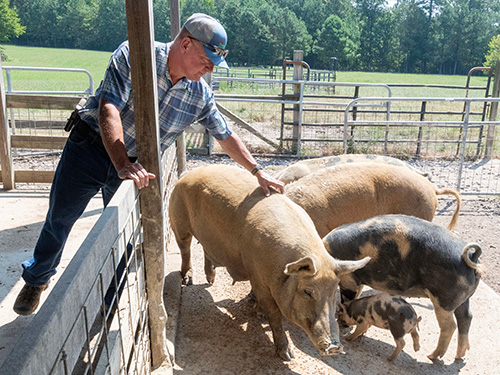United States Hog Inventory Down Slightly
Apr 07, 2025

As of Mar.1, there were 74.5 million hogs and pigs on U.S. farms, down slightly from March 2024 and down 1% from Dec. 1, 2024, according to the Quarterly Hogs and Pigs report published today by the U.S. Department of Agriculture’s National Agricultural Statistics Service (NASS).
Other key findings in the report were:
To obtain an accurate measurement of the U.S. swine industry, NASS surveyed 4,455 operators across the nation during the first half of March. The data collected were received online through NASS’s Respondent Portal, by mail, telephone and through face-to-face interviews. View the chart here.
The Quarterly Hogs and Pigs report and all other NASS reports are available online at www.nass.usda.gov.
Other key findings in the report were:
- Of the 74.5 million hogs and pigs, 68.5 million were market hogs, while 5.98 million were kept for breeding.
- Between December 2024 and February 2025, 33.7 million pigs were weaned on U.S. farms, down slightly from the same period one year earlier.
- From December 2024 through February 2025, U.S. hog and pig producers weaned an average of 11.65 pigs per litter.
- U.S. hog producers intend to have 2.91 million sows farrow between March and May 2025, and 2.96 million sows farrow between June and August 2025.
- Iowa hog producers accounted for the largest inventory among the states, at 24.3 million head. Minnesota had the second largest inventory at 9.2 million head. North Carolina was third with 8.1 million head.
To obtain an accurate measurement of the U.S. swine industry, NASS surveyed 4,455 operators across the nation during the first half of March. The data collected were received online through NASS’s Respondent Portal, by mail, telephone and through face-to-face interviews. View the chart here.
The Quarterly Hogs and Pigs report and all other NASS reports are available online at www.nass.usda.gov.